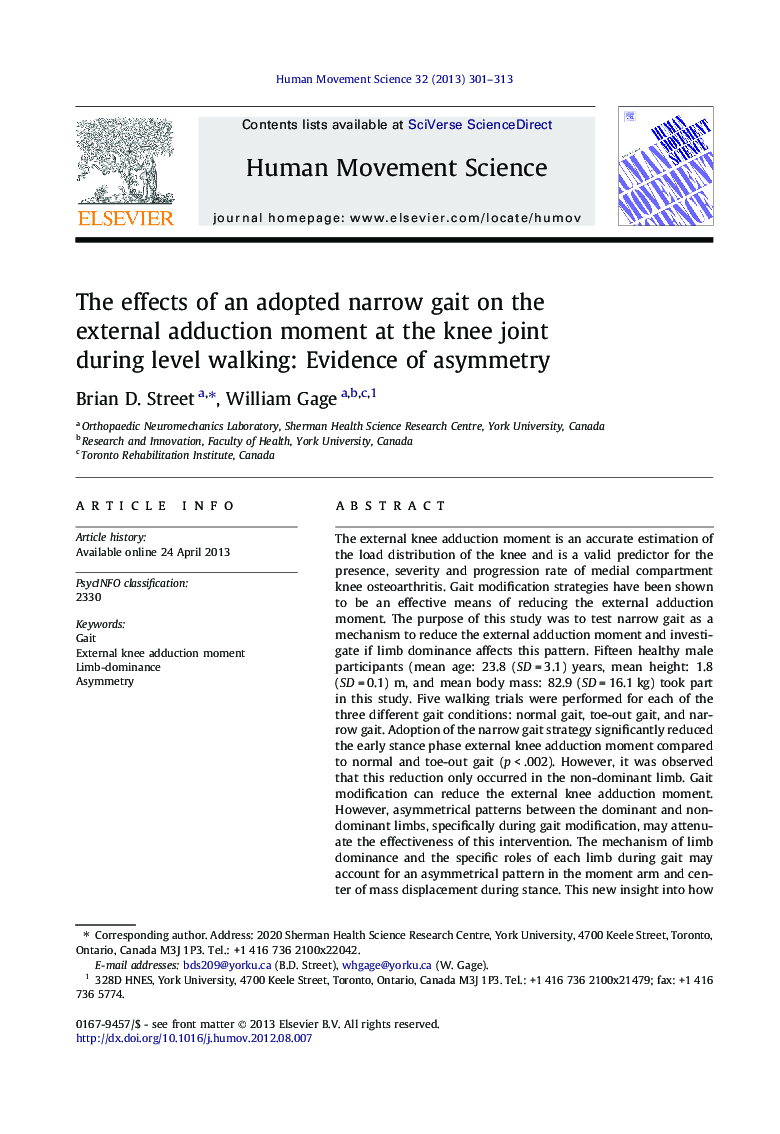| کد مقاله | کد نشریه | سال انتشار | مقاله انگلیسی | نسخه تمام متن |
|---|---|---|---|---|
| 928430 | 922366 | 2013 | 13 صفحه PDF | دانلود رایگان |

The external knee adduction moment is an accurate estimation of the load distribution of the knee and is a valid predictor for the presence, severity and progression rate of medial compartment knee osteoarthritis. Gait modification strategies have been shown to be an effective means of reducing the external adduction moment. The purpose of this study was to test narrow gait as a mechanism to reduce the external adduction moment and investigate if limb dominance affects this pattern. Fifteen healthy male participants (mean age: 23.8 (SD = 3.1) years, mean height: 1.8 (SD = 0.1) m, and mean body mass: 82.9 (SD = 16.1 kg) took part in this study. Five walking trials were performed for each of the three different gait conditions: normal gait, toe-out gait, and narrow gait. Adoption of the narrow gait strategy significantly reduced the early stance phase external knee adduction moment compared to normal and toe-out gait (p < .002). However, it was observed that this reduction only occurred in the non-dominant limb. Gait modification can reduce the external knee adduction moment. However, asymmetrical patterns between the dominant and non-dominant limbs, specifically during gait modification, may attenuate the effectiveness of this intervention. The mechanism of limb dominance and the specific roles of each limb during gait may account for an asymmetrical pattern in the moment arm and center of mass displacement during stance. This new insight into how limb-dominance effects gait modification strategies will be useful in the clinical setting when identifying appropriate patients, when indicating a gait modification strategy and in future research methodology.
► The early stance phase EKAM peak is higher in knee osteoarthritic patients.
► Gait modification strategies are an effective means of reducing the EKAM.
► A narrow gait strategy reduced the early stance phase EKAM peak.
► Reductions in the EKAM peak were only observed in the non-dominant limb.
► Synchronous bilateral collection is vital to studying gait modification strategies.
Journal: Human Movement Science - Volume 32, Issue 2, April 2013, Pages 301–313